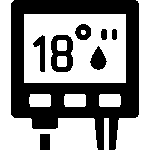Smart Irrigation Power Supply Guide – 5V & 3.3V

🌱 The Problem : Powering Smart Irrigation Systems Reliably at Low Voltage
Smart irrigation systems—automated watering setups using sensors—often need a reliable low-voltage power supply (typically 3.3V or 5V) to operate microcontrollers, relays, and moisture sensors. However, fluctuating solar or battery input can damage components or cause resets if not managed properly.
🔧 The Solution: Use a Low-Dropout Regulator or Buck Converter
To maintain a steady supply, use a low-dropout regulator (LDO) if your input is slightly above the desired voltage (e.g., 6V input to 5V output). For higher differences, go with a buck converter to ensure efficiency and stability. Include decoupling capacitors to reduce noise.
🌾 Practical Example: 12V Battery to 5V Microcontroller
If you’re running your irrigation controller off a 12V lead-acid battery, a buck converter like MP1584 can convert it to a stable 5V output for your ESP32 or Arduino board.
🧮 Sample Calculation :
To calculate power usage:
If your ESP32 draws 150mA at 5V,
Power = V × I = 5V × 0.15A = 0.75W
Ensure your regulator supports at least 1W output for safe margin.
🛠️ Product Suggestion :
Browse for “buck converter” or “flux” to build clean, efficient power circuits:
🛒 Shop now at SmartXProKits.in
🇮🇳 Support our work and India’s innovation—buy from our Make in India site!




















